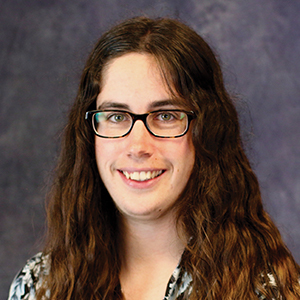JBC Tabor award: Calculating the protein—evolution connection
Sandeep Eswarappa has devised mathematical models to explain what drove this fusion event.
Growing up in Kadur, a small town in India, Eswarappa became interested in research while observing experiments in his father’s high school science laboratory. After earning an M.B.B.S. degree (equivalent to an American M.D.), he pursued a Ph.D. at the Indian Institute of Science, or IISc, studying host-pathogen interactions in Salmonella.
 Sandeep Eswarappa uses mathematical models to study a fusion of two genes in single-celled ancestors of modern animals. Genetic rearrangements, duplications and fusions have occurred throughout the evolution of life on Earth. In an ancient single-celled ancestor to modern animals, a fusion occurred between two enzymes responsible for adding amino acids to growing protein chains.
Sandeep Eswarappa uses mathematical models to study a fusion of two genes in single-celled ancestors of modern animals. Genetic rearrangements, duplications and fusions have occurred throughout the evolution of life on Earth. In an ancient single-celled ancestor to modern animals, a fusion occurred between two enzymes responsible for adding amino acids to growing protein chains.
“During this time I was exposed to the vibrant intellectual environment of IISc and developed interests in theoretical biology, evolutionary biology and genomics,” he said.
After earning his Ph.D., Eswarappa moved to the Cleveland Clinic Lerner Research Institute for postdoctoral work in the laboratory of Paul Fox. While his research focused on the formation and repair of blood vessels in the heart, Eswarappa also was fascinated by the connection between changes in protein production and animal evolution.
Because the earliest unicellular ancestors of modern animals lived about 1 billion years ago, Eswarappa and colleagues needed to develop equations to study them.
“The main challenge was to express a purely biological concept in mathematical terms,” he said.
Eswarappa’s models suggest that changes in metabolism provided an evolutionary advantage for the fusion of the two enzymes studied in the Fox lab.
Outside of the lab, Eswarappa keeps his focus on science. He enjoys watching Carl Sagan or David Attenborough documentaries and reading books by Richard Dawkins or Simon Singh.
In 2015, Eswarappa moved back to the IISc to start his own laboratory as an assistant professor; there, he continues to study the regulation of protein production and blood vessel formation.
Protein fusion drives animal evolution
Single-celled ancestors of modern animals lived about 1 billion years ago, when atmospheric oxygen was at less than 1 percent of modern levels. The lack of oxygen slowed the reactions that produce the amino acid proline and its precursor, glutamic acid, from intermediates in the breakdown of carbon-rich molecules to produce energy.
These organisms began incorporating more proline into their proteins, which later would support multicellularity. This further depleted cellular stores of proline, impairing the ability of ancient organisms to produce proteins.
Sandeep Eswarappa and his colleagues suspected that these changes drove the fusion of two genes responsible for incorporating proline and glutamic acid into proteins. To test this hypothesis, they used a series of equations to model the response of organisms with and without the fusion to changes in the supply and demand of proline. Organisms with fused genes responded much better, likely because the fusion connected proline usage to the supplies of molecules needed to produce it.
For the paper reporting this research, Eswarappa received a 2019 Journal of Biological Chemistry/Herbert Tabor Young Investigator Award.
“Our work provides compelling evidence for the close evolutionary relationship between two fundamental processes of life — protein synthesis and the central carbon metabolism,” Eswarappa said.
In the future, the group plans to look for other genetic fusion events that facilitated the evolution of animals.
Enjoy reading ASBMB Today?
Become a member to receive the print edition four times a year and the digital edition monthly.
Learn moreGet the latest from ASBMB Today
Enter your email address, and we’ll send you a weekly email with recent articles, interviews and more.
Latest in People
People highlights or most popular articles

In memoriam: Michael J. Chamberlin
He discovered RNA polymerase and was an ASBMB member for nearly 60 years.

Building the blueprint to block HIV
Wesley Sundquist will present his work on the HIV capsid and revolutionary drug, Lenacapavir, at the ASBMB Annual Meeting, March 7–10, in Maryland.

In memoriam: Alan G. Goodridge
He made pioneering discoveries on lipid metabolism and was an ASBMB member since 1971.

Alrubaye wins research and teaching awards
He was honored at the NACTA 2025 conference for the Educator Award and at the U of A State and National Awards reception for the Faculty Gold Medal.

Designing life’s building blocks with AI
Tanja Kortemme, a professor at the University of California, San Francisco, will discuss her research using computational biology to engineer proteins at the 2026 ASBMB Annual Meeting.

Jordahl named Gilliam Fellow
He will receive three years of funding to support his thesis research.

